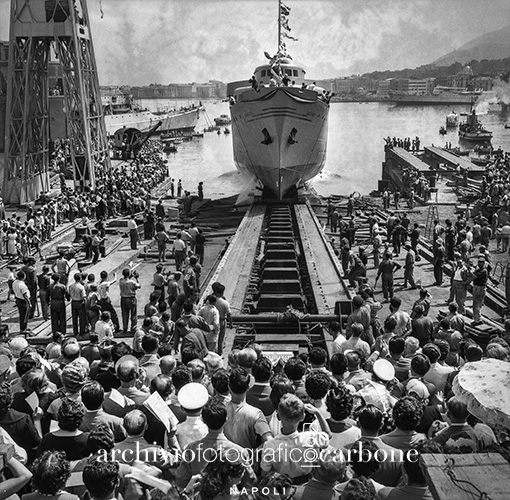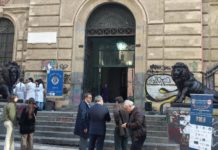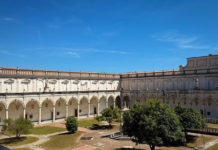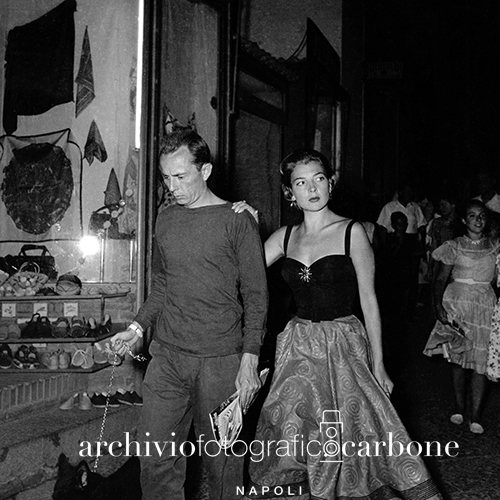
Gli occhi catturano la vita. Tra passato e presente. L’associazione Movimento aperto guidata da Ilia Tufano continua a tenere alta l’attenzione sull’arte della fotografia.
Oggi, mercoledì 15 novembre, dalle 17, nello spazio di via Duomo 290/C a Napoli, si inaugura la mostra “Napoli, lo sguardo di ieri”: a 50 anni dalla morte del fotoreporter Riccardo Carbone, Giovanni Ruggiero, a sua volta cronista dell’immagine (durante e dopo la sua carriera da inviato per il quotidiano L’Avvenire), cura un’esposizione che svela aneddoti e angoli della città di un tempo.
Riccardo Carbone per più di cinquant’anni ha visto Napoli dal mirino della sua macchina fotografica. Tutti i negativi che ha lasciato registrano giorno dopo giorno, gioie, passioni, dolori, speranze e ansie della città.
Lui stesso si autodefiniva un fotocronista: «Macchina in tasca, nervi a posto, un sorriso sulle labbra: me ne vado a caccia d’immagini d’attualità», Approdò giovanissimo al “Mattino” agli inizi degli anni Venti del secolo scorso, assunto da Paolo Scarfoglio con la qualifica insolita per quei tempi di “redattore fotografo” e a tutti gli eventi veniva accreditato come giornalista.
Il suo obiettivo immortala il fascismo che incombe con le censure imposte alla stampa. Ne fissa i miti, le imprese, i fasti e le illusioni. E da quel momento, afferra istanti di storia raccolti nelle migliaia di negativi conservati dall’Associazione Riccardo Carbone Onlus che sta effettuando una meticolosa operazione di memoria: digitalizza, cataloga e mette online questo enorme patrimonio per farlo consultare.
Un modo anche per ricordare che Riccardo Carbone fu un grande protagonista del fotogiornalismo moderno quando nascevano piccole agenzie di cui i fotografi erano spesso proprietari. Riccardo Carbone fondò, infatti, la sua «Fotoagenzia Napoli», così come Giulio Torrini la propria a Firenze, Carlo Riccardi a Roma o i fratelli Vincenzo e Guglielmo Troncone, sempre a Napoli. Mostrando sui quotidiani italiani il nuovo Paese che si stava sviluppando.
Così conosciamo la povertà del dopoguerra attraverso gli sciuscià affamati e cenciosi. Uno scatto dopo l’altro: ecco che Carbone svela la «Napoli Milionaria» di Eduardo, quella della «Pelle» di Malaparte o la città raccontata da De Sica e Rossellini. Ma anche il volto nuovo con l’aeroporto di Capodichino.
Finito il lavoro per il giornale, Carbone, si guardava intorno e, quando scorgeva altre cose, le fotografava e le portava a casa. Difficilmente si avvicinava a meno di tre metri dal soggetto, restituendo un pezzetto di mondo napoletano. Che ha lasciato in eredità a tutti noi.
La mostra resterà aperta fino al 15 dicembre (il lunedì e il martedì ore 17-19, il giovedì ore 10.30-12.30 e su appuntamento chiamando i numeri 3332229274 – 3356440700).
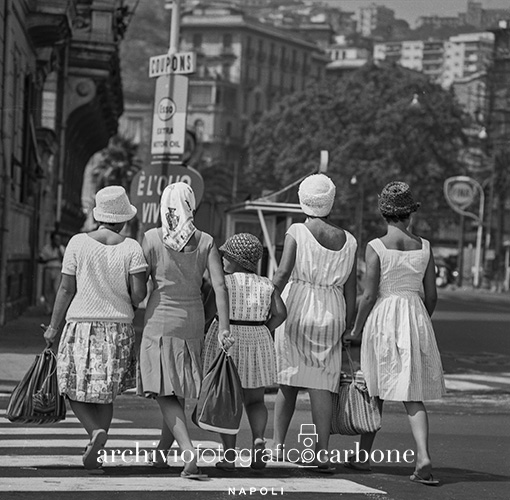
Riccardo Carbone, Naples in yesterday’s gaze: images revealing the city on display
Eyes capture life. Between the past and the present. The Open Movement Association, led by Ilia Tufano, continues to focus on the art of photography.
Today, on Wednesday, November 15th, at 5 p.m., in the space at 290 Via Duomo/C in Naples, the exhibition “Naples, the gaze of yesterday” will be inaugurated: 50 years after the death of the photojournalist Riccardo Carbone, Giovanni Ruggiero, himself a chronicler of images (during and after his career as a correspondent for the newspaper L’Avvenire), has curated an exhibition that reveals anecdotes and corners of the city of yesteryear.
Riccardo Carbone saw Naples through the viewfinder of his camera for more than 50 years. All the negatives he left behind record, day after day, the joys, passions, sorrows, hopes and fears of the city.
He called himself a photojournalist: “Car in my pocket, nerves in place, a smile on my lips: I’m off to hunt for the latest pictures.” At the beginning of the 1920s, he landed at the “Mattino” at a very young age, hired by Paolo Scarfoglio with the unusual title for the time of “editor photographer”, and in any case he was credited as a journalist.
His lens captures the looming fascism with its censorship of the press. He captures its myths, its exploits, its glories and its illusions. And from that moment on, he captures moments of history, collected in the thousands of negatives preserved by the Riccardo Carbone Onlus Association, which carries out a meticulous operation of memory: it digitizes, catalogues and puts online this enormous heritage so that it can be consulted.
It is also a way to remember that Riccardo Carbone was a great protagonist of modern photojournalism, when small agencies were born and photographers often owned them. In fact, Riccardo Carbone founded his “Fotoagenzia Napoli”, as did Giulio Torrini in Florence, Carlo Riccardi in Rome or the brothers Vincenzo and Guglielmo Troncone, also in Naples. The Italian newspapers showed the new country that was emerging.
Thus we learn about postwar poverty through the hungry and ravenous Sciuscià. One shot after another: here Carbone reveals Eduardo’s “Naples Millionaire”, that of Malaparte’s “Skin”, or the city narrated by De Sica and Rossellini. But also the new face of the Capodichino airport.
When he finished his work for the newspaper, Carbone looked around and, if he saw something different, he photographed it and took it home. He would have never got closer than ten feet to his subject, bringing (in this way) back a small piece of the Neapolitan world shich he left it to all of us.
The exhibition is open until December 15th (Mondays and Tuesdays from 17.00 to 19.00, Thursdays from 10.30 to 12.30 and by appointment at 3332229274 – 3356440700).


